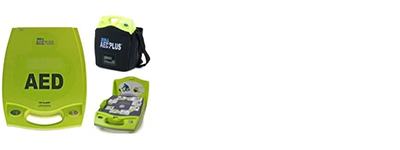Support Page Content
Emergency Management Training
Emergencies and disasters can strike at any time and have severe consequences on the health and safety of the community. Sacramento State's Emergency Management Program encourages all students, faculty, and staff to prepare for emergencies by receiving training in emergency management tenets and protective safety measures.
First Aid/CPR/AED Training
The course teaches the basic techniques of First Aid, Adult CPR, and use of an AED. Staff and Faculty also learn to use barrier devices in CPR and how to administer First Aid for choking victims. Designed for anyone with limited or no medical training who needs a course completion card in CPR AED to meet job, regulatory or other requirements. Dates and times are available on the Sac State events calendar for safety training for faculty and staff.
First Aid Kits
First aid kits are not required on campus, however many departments and offices wishes to have them available in case of small incidents. Continue reading about First Aid Kits
Stop the Bleed Training
Sac State is now an Educational Licensee through the Department of Defense to teach Stop the Bleed training. Emergency Management can now provide free Stop the Bleed training to our students and employees. Stop the Bleed training has been incorporated as part of the First Aid, CPR, and AED training program, but can also be provided as a separate 90 minute training session.
For more information about Stop The Bleed, visit the Stop The Bleed Coalition website https://stopthebleedcoalition.org/.
To schedule training for your group, please contact Janie Mutchler at xiong@csus.edu

Building Coordinator and Floor Marshall Training
This annual, one hour training will cover the following areas:
- Program Overview and History
- Responsibilities of Building Coordinators and Floor Marshals
- Multi Hazard Plan/Building Emergency Plan
- Evacuation Procedures/Procedures for the Disabled
- Interaction with First Responders
- Active Shooter Response
This training is open for anyone who is interested in learning about what to do in case of a building evacuation or emergency. However, attendance is mandatory for all members of the building emergency preparedness teams, building coordinators, and floor marshals who have responsibilities during a disaster or emergency.
AED usage

Most AEDs are designed to guide bystanders, coworkers, and other lay rescuers through a rescue using voice, text, or illustrations. When an emergency occurs and you observe any of the symptoms mentioned above, follow these steps:
- Call 9-1-1 immediately ((916) 278-6000 from you cell phone) and send another bystander to find the closest AED.
- Check to see if the victim is struggling to breathe and if they have a pulse. If the victim is unresponsive and you cannot find a pulse, start performing hands-only* CPR immediately to maintain blood flow to vital organs.
- When the AED arrives, attach the electrode pads to the victim following the AED guidance. Once connected, the AED will automatically analyze the victim’s heart rhythm or ask you to push a button to start the analysis. Don’t touch the victim while the AED performs this analysis. Not all SCA victims require a shock immediately, and the AED will let you know what to do next. It may advise you to press a button to administer a shock, or it may automatically administer one. Be sure to follow the visual or audio prompts.
- After a shock is delivered, the AED will instruct you to continue performing CPR. Some AEDs will measure the rate and depth of your compressions and will instruct you to adjust what you’re doing in order to deliver high-quality CPR. Follow the AED prompts to improve CPR quality.
- Continue administering CPR and following the prompts on the AED until emergency personnel arrive.
- If you notice obvious signs of life, discontinue CPR and monitor breathing for any changes in condition.
- Note where the victim is being transported to if emergency responders takes the AED with them.
- Notify Emergency Management that AED was used and if it was taken with the victim.